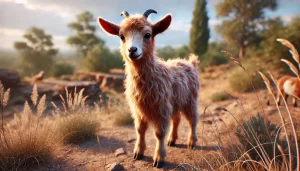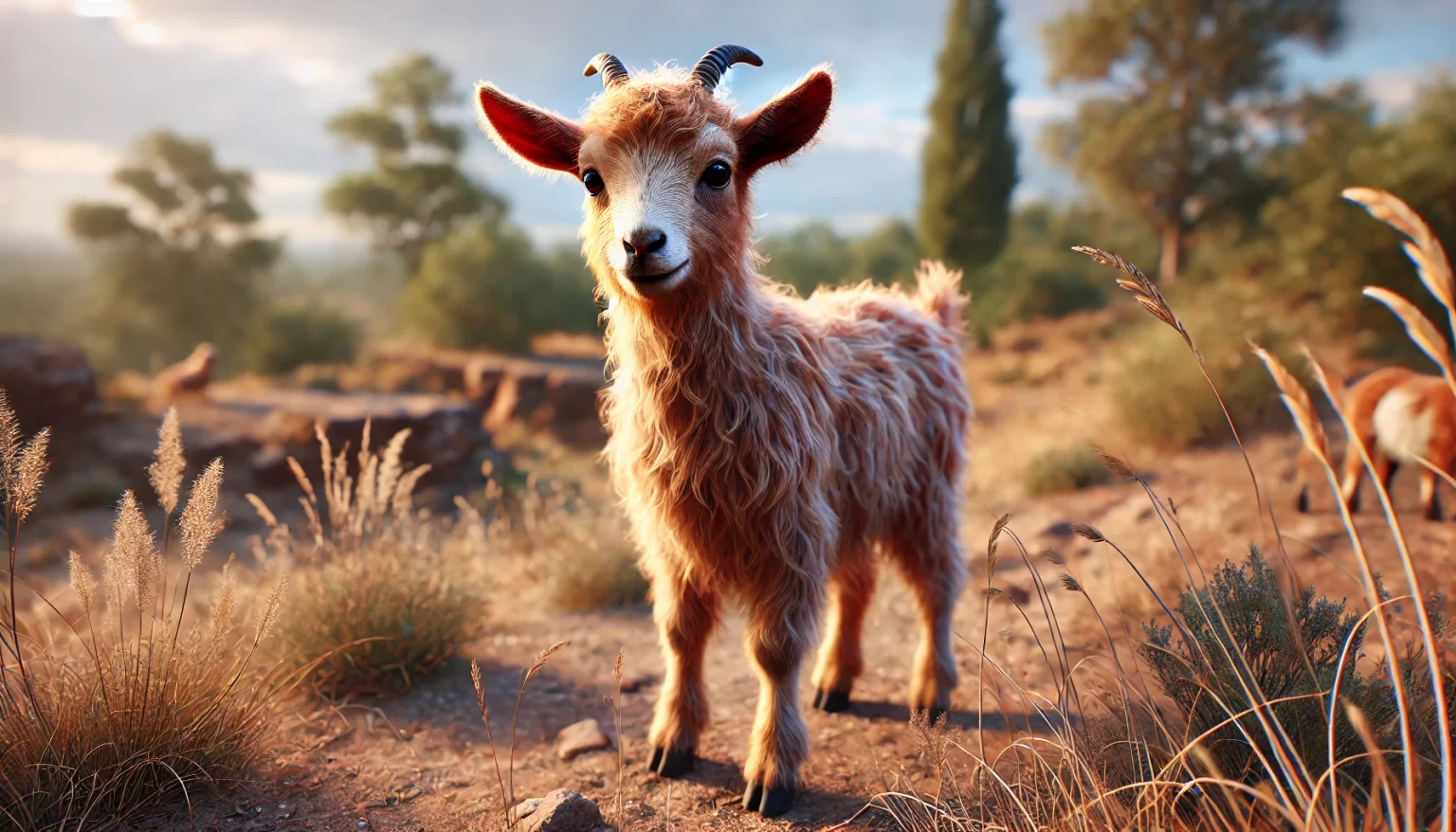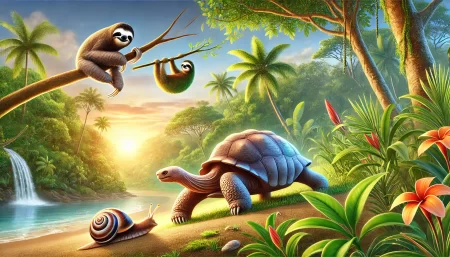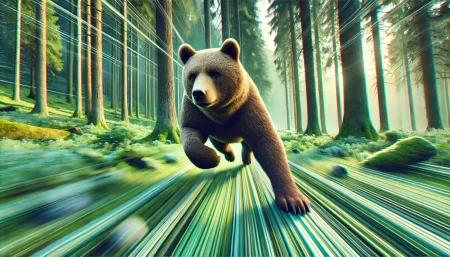Goats have been fascinating companions to humans for thousands of years, playing a vital role in agriculture and culture across the globe. From domestic goats grazing in fields to wild goats navigating rocky mountain terrains, these animals are as versatile as they are intriguing.
With over 200 breeds, ranging from the woolly Angora to the sturdy mountain goats, there’s more to these creatures than meets the eye. Female goats, known for their nurturing nature, communicate using unique calls that others soon recognize.
Their quirky traits, like the use of “mouth” and the presence of “wattles,” add to their charm. Whether you’re herding a group or admiring their horns, there’s no shortage of fun facts about goats. So, let’s dive into 10 fascinating facts about goats you might not know and explore the unique characteristics that make them truly special.
What special abilities do goats have?
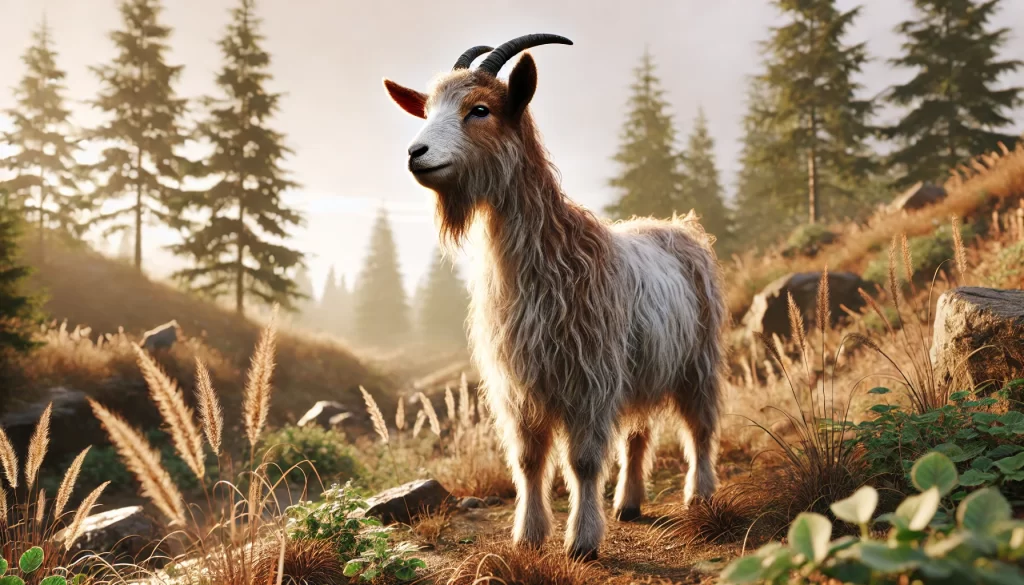
Goats have some fascinating skills that set them apart from other animals. One of the most exciting things about goats is their unique rectangular pupil, which gives them a wide field of vision, helping them spot predators.
Both male and female goats, including breeds like the Nigerian dwarf goat, have the incredible ability to give birth to baby goats, called kids, who can stand and walk within minutes of being born.
A male goat is called a buck, and mother and kid goats share a strong bond. Unlike cows, goats use their lips and teeth to chew on various foods, making them excellent foragers.
10 Fascinating Facts About Goats You Might Not Know
1. Goats Are Surprisingly Dog-Like
Goats are known for their quirky behavior, but did you know they share a surprising similarity with dogs? A study revealed that goats, like domesticated dogs, look to humans for help when frustrated.
This behavior highlights their intelligence and emotional depth, making them more than just simple farm animals. Goats are very social mammals and closely related to sheep, displaying a range of emotions that go beyond what one might expect.
Here are some key insights from the study:
- Goats will gaze directly into a human’s eyes when seeking help, just as dogs do when they want something.
- This behavior suggests that goats can form bonds with humans, recognizing them as sources of support.
- Goats can understand human cues, showing an impressive level of cognitive ability for a non-primate mammal.
- Unlike other animals that might rely solely on instinct, goats appear to communicate their needs using problem-solving skills.
- This study illuminates the importance of animal welfare and conservation, as understanding these behaviors can improve the way goats are cared for.
Whether bleating for attention or lying around the hay, goats are more than just eaters with rectangular pupils and goat horns.
Their behavior mirrors that of dogs, and their social intelligence adds to their charm. Breeds like the Nigerian Dwarf and Lamancha, with their unique beards and meter-high jumps, further emphasize how remarkable these animals are.
2. Those Odd Eyes Serve a Purpose
Goats have some of the most fascinating eyes in the animal kingdom. Their horizontal, rectangular pupils are not just a quirky feature; they play a crucial role in their survival and daily lives.
These unique pupils provide goats with a panoramic field of vision, allowing them to see nearly 320 to 340 degrees around them. This adaptation is vital for animals that live in groups called herds, especially in open environments where predators are a constant threat.
- Wider Field of Vision: The horizontal pupils help goats see potential dangers without moving their heads.
- Enhanced Peripheral Vision: This wide-angle vision allows goats to spot predators quickly, even from the corners of their eyes.
- Better Stability: The shape of the pupils helps maintain balance, especially when navigating rocky terrains, which is crucial for wild goats.
- Adaptation to Grazing: Goats are picky eaters, but they can graze while remaining alert to their surroundings and avoiding threats.
- Night Vision: Although not as strong as some nocturnal animals, these pupils also aid in low-light conditions, giving goats an advantage at dawn or dusk.
This incredible eye structure and strong rumen and agility make goats one of the smallest breeds that thrive in various environments.
So, next time you wonder, “How much do you know about goats?” remember their remarkable eyes and how they contribute to their survival, allowing them to avoid predators while making cheese from their milk or lying around loose after mothers give birth.
3. Goats Have a Rich Emotional Life
Goats are far more emotionally complex than they may first appear, showcasing a rich emotional life that often surprises those interacting with them. As domesticated animals, goats have evolved not only to survive but also to thrive within social groups, forming strong bonds with their herd.
They can distinguish between emotions in their fellow goats, responding differently to calls of joy or distress. This ability to read emotional cues is vital for their survival, as it allows them to react to potential threats from predators or to comfort one another without having to move.
- Goats recognize emotions through vocalizations, such as bleats or calls, which convey different states of mind.
- They respond to distress calls by grouping, which helps protect them from potential threats.
- Goats form lifelong social bonds with other herd members, showing signs of distress when separated.
- These social bonds are maintained throughout the year, regardless of habitat or climate.
- Goats communicate through subtle body language, like ear positions and tail movements.
Goats regurgitate and chew their cud, often in the company of their herd, reinforcing their social connections. Their ability to understand emotions and form bonds, combined with their diverse sizes and straighter hair, makes goats unique among domesticated animals like cattle. This emotional intelligence is a testament to their complex and fascinating nature.
4. The Rain? No, Thanks!
Goats, particularly the angora and cashmere breeds, are well-known for their aversion to rain. This intense dislike for getting wet is not just a preference but likely an evolved behavior. Goats are natural browsers, meaning they prefer to forage on bushes and trees rather than graze on ground-level vegetation.
Their sensitivity to weather, especially rain, might be an adaptation to avoid parasites, which thrive in wet environments. Staying dry also helps them maintain their thick coats, whether the luxurious cashmere or the curly mohair, which can weigh several kilograms when wet.
- Goats seek shelter at the first sign of rain, often retreating to a barn or any available cover.
- Wet fur can decrease body temperature, making goats more susceptible to depression and illness.
- Goats have a sensitive digestive system, with compartments like the reticulum, omasum, and abomasum that work best when the animal is dry and comfortable.
- The aversion to rain may also be linked to their origins in mountainous regions, where staying dry was crucial for survival.
- Goats prefer to keep their sensitive lips dry, as dampness can affect their browsing behavior.
Interestingly, wild relatives like the markhors also show similar behaviors, suggesting this aversion to rain has deep evolutionary roots. By avoiding the rain, goats stay dry and avoid potential health hazards.
5. They Come in All Shapes, Sizes, and Colors
Goats are a fascinating species, bursting with diversity in their breeds. These remarkable animals, classified under the genus Capra, come in an impressive array of shapes, sizes, and colors.
From the petite Nigerian Dwarfs, standing less than half a meter tall, to the majestic Anglo-Nubians, known for their long ears and towering height, goats live in a world full of variety.
Their coats can also range from solid black or white to striking patterns of spots and stripes, making each goat unique.
- Nigerian Dwarfs: Tiny goats that are not much bigger than a large dog, perfect for small spaces.
- Anglo-Nubians: Large, impressive goats with distinct long ears and a gentle nature.
- Pygmy Goats: Compact and sturdy, these goats are often kept as pets.
- Saanen: Known for its high dairy production, gallons of milk are produced daily.
- Boer Goats: A meat breed with a robust build, often spotted or white with a redhead.
Goats also have a fascinating range of wool types, from the soft undercoat used to make cashmere to the coarser hair found on many breeds.
Baby goats, known as kids, bring additional charm to the farm, hopping around with boundless energy. Whether bred for milk, wool, or companionship, these adaptable animals continue to captivate with their diversity and charm.
6. A Complicated Digestive System
Goats have a unique and fascinating digestive system that sets them apart from many other animals. Their four-compartment stomach plays a crucial role in processing their fibrous diet.
This complex system allows goats to efficiently break down tough plant materials and extract the necessary nutrients.
The four compartments, rumen, reticulum, omasum, and abomasum, each have specific functions that aid in digestion.
- Rumen: The largest compartment where food fermentation occurs with the help of microorganisms.
- Reticulum: Works closely with the rumen to trap foreign objects and filter out finer particles for further digestion.
- Omasum: Absorbs water and nutrients from the digested food, making it a critical part of the process.
- Abomasum: The true stomach, where the food is mixed with digestive enzymes before moving into the intestines.
Goats and other ruminants have similar digestive processes, but their stomach compartments are different in size, and their grazing habits differ. While cows are more selective grazers, goats are known to browse on various vegetation.
Baby goats, called kids, start developing this intricate system soon after the mother gives birth. The size of these compartments varies greatly depending on the goat’s age, with kids’ rumens being about 8 to 12 inches at birth.
If a goat’s diet isn’t balanced, it can become depressed or suffer digestive issues like other ruminants. Understanding this complex system is crucial for their care, especially during their gestation period and early life
7. They’re Early Domestication Success Stories
Goats are among the earliest domesticated animals, dating back around 10,000 years. Their success as one of humanity’s first domesticated species was crucial in developing early agriculture and civilization.
These hardy, adaptable creatures were integral to the survival of early human societies, providing a reliable source of food, clothing, and other essential materials.
- Early domestication: Goats were first domesticated in the Fertile Crescent, often called the “cradle of civilization.”
- Sustenance: They provided milk, meat, and even blood, essential for nutrition in early human communities.
- Clothing and shelter: Goats’ hides and hair created clothing, tents, and blankets, offering warmth and protection.
- Agriculture: Goats helped clear land for farming, and their manure was a valuable fertilizer, enhancing crop yields.
- Cultural significance: Goats were often featured in early myths and religious rituals, symbolizing fertility and vitality.
Their versatility and resilience made them invaluable companions to humans, aiding in the transition from nomadic lifestyles to settled agricultural communities. Goats are essential to human life, a testament to their enduring legacy as early domestication success stories.
8. Mythological Connections
Goats have long held a significant place in mythology, often symbolizing strength, fertility, and resilience. In Norse mythology, goats are particularly notable as they are associated with Thor, the god of thunder. Thor’s chariot was famously pulled by two mighty goats, Tanngrisnir and Tanngnjóstr.
These goats weren’t just ordinary animals; they had the magical ability to be slaughtered and eaten by Thor, only to be resurrected the next day, showcasing the themes of renewal and the cyclical nature of life.
- Symbol of Strength: Goats pulling Thor’s chariot symbolize power and endurance, key traits revered in Norse culture.
- Fertility and Vitality: Thor’s goats’ regenerative ability connects them to fertility and life themes.
- Renewal: The daily resurrection of these goats after being consumed by Thor symbolizes renewal and the never-ending cycle of life and death.
- Protection: Thor, often seen as a protector of mankind, is symbolically supported by the strength of his goats.
- Cultural Reverence: Goats’ prominence in mythology reflects their importance in ancient societies as symbols of wealth and survival.
These stories highlight the mythical powers of goats and reflect the cultural reverence for these animals in ancient societies.
9. Beards, Wattles, and More
Goats are renowned for their quirky and charming appearance, largely thanks to unique physical features like beards and wattles. These distinctive traits set them apart from other animals, adding to their endearing and sometimes whimsical allure.
- Beards: Common in male and female goats, beards vary in length and thickness across different breeds, which is a prominent feature that enhances their characteristic look.
- Wattles are small, fleshy appendages that hang from the goat’s neck. Scientists remain a bit puzzled about their purpose, yet they undeniably contribute to the goat’s unique silhouette.
- Horn Variations: Goats exhibit a wide range of horn shapes and sizes, from the elegantly curved to the impressively spiraled, adding to their diverse and intriguing appearance.
- Eyes with Horizontal Pupils: This unusual eye structure grants goats a wide field of vision, helping them detect predators while also giving them a distinctly captivating gaze.
- Coat Patterns and Colors: Goats boast an array of coat designs, from solid hues to intricate patterns, reflecting their adaptability and the rich diversity among breeds.
- Agile Hooves: Their specially adapted hooves allow goats to easily navigate steep and rocky terrains, showcasing functionality and natural design’s marvels.
- Expressive Ears: From floppy to upright, goat ears come in various shapes and sizes, often conveying their moods and adding to their playful demeanor.
These features serve various functional roles and make goats one of the most easily recognizable and beloved animals worldwide. Their unique physical characteristics continue to fascinate and inspire admiration, highlighting the incredible diversity within the animal kingdom.
10. Goats Are Great at Diets
Despite the common myth that goats will eat anything, these animals are picky eaters with refined dietary habits. At the same time, goats can indeed thrive in harsh environments.
Their ability to find nutrition is more about selectivity than indiscriminate eating. Goats are browsers, not grazers, meaning they prefer to nibble on various plants, often choosing the most nutritious options available.
- Selective Browsers: Goats seek out the most nutrient-rich parts of plants, such as leaves, twigs, and even tree bark.
- Survival Experts: Goats can survive on sparse vegetation in tough environments, making them valuable livestock in areas with limited resources.
- Avoidance of Toxic Plants: Contrary to the myth, goats often avoid harmful plants that lack nutritional value.
- Nutrient Seekers: Goats can identify and consume plants that meet their nutritional needs, even in challenging conditions.
- Preference for Variety: They enjoy a diverse diet, preferring to mix different vegetation types rather than sticking to one source.
This discerning approach to eating allows goats to maintain a balanced diet, even in environments where food is scarce. Their ability to extract nutrients from challenging or unconventional sources showcases their adaptability and resilience, debunking the myth that goats will eat just about anything.
Conclusion
Goats are far more than cute farm animals. They’re fascinating creatures with unique qualities that set them apart. From their exceptional dietary habits to their incredible adaptability, goats have a rich history and a set of surprising characteristics that deserve our appreciation.
Next time you encounter a goat, take a moment to admire its playful nature and the remarkable traits that make it so special. Goats continue to intrigue and amaze us with their enduring charm and resilience, whether in the wild or on the farm.


